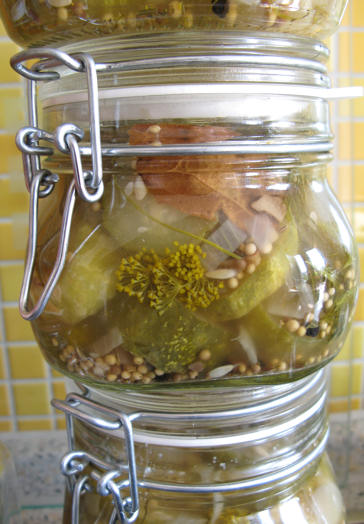![Garten-Koch-Event: Topinambur [30.11.2007] Garten-Koch-Event: Topinambur [30.11.2007]](http://farm3.static.flickr.com/2407/1875440999_04c7c6d7f0_o.jpg)
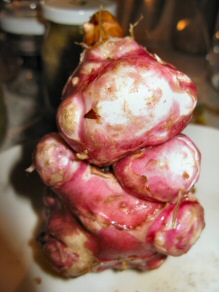 Last year my jerusalem artichokes had flowers – but not this year. But that didn’t stop the tuber production at all. It also produced the cute little being on the right.
Last year my jerusalem artichokes had flowers – but not this year. But that didn’t stop the tuber production at all. It also produced the cute little being on the right.
I hope for many new recipes during the current Garten-Koch-Event „Topinambur“, in order to manage the huge amount of jerusalem artichokes.
The dearest one only wanted classic Kassler with Kraut. But of course, I couldn’t help myself and had to try something new. The sweet-and-hot sauce went very well with the slightly salty meat and the sauerkraut. Next time (Yes, I may!  ) I will make more sauce and also brush the potatoes and the jerusalem artichokes.
) I will make more sauce and also brush the potatoes and the jerusalem artichokes.
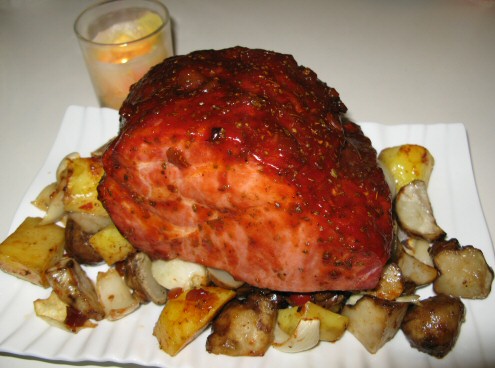
Virginia-Kassler with Jerusalem Artichokes
| Source: | Adapted from kochen&geniessen 11/2007 November 7, 2007 by Sus |
| Categories: | Meat, Kassler, Jerusalem artichoke, Sauerkraut |
| Yields: | 6 servings |
Ingredients:
| 750 | gram | Jerusalem Artichokes |
| 750 | gram | Potatoes |
| 3 | large Onions | |
| 3-4 | tablespoon | Oil |
| Sea salt | ||
| Pepper | ||
| 1 | kg | Kassler Roast (without bone) |
| 3 | tablespoon | Barbecue sauce (bottle) |
| 3 | tablespoon | Whiskey (irish, without ‚e‘) |
| 2 | tablespoon | Brown sugar |
| 1 | teaspoon | Majoram; dried |
| Cayenne pepper | ||
| 1/2 | teaspoon | Garlic powder |
| Majoram for garnish | ||
| Sauerkraut: | ||
| 1 | kg | Sauerkraut |
| 1 | Onion | |
| 2 | Bay leaves | |
| 4 | Juniper berries; slightly crushed | |
| 2 | Cloves | |
| Cider | ||
| 1 | teaspoon | Instant vegetable stock |
| Salt, pepper |
Preparation:
Scrub the potatoes in water and cut into pieces like for boiled potatoes. Also scrub the jerusalem artichokes, peel if necessary and cut in pieces the same size.
Peel the onions and cut into four or six pieces lengthwise. Put all on a oven pan. Brush with oil and season with salt and pepper.
Put the pan in the lowest position of the preheated oven (Electric: 175°C / Convection: 150°C / Gas: 2). Place the Kassler on the grid and put the grid directly above the pan. Let roast for 50 to 60 minutes.
Mix barbecue sauce, whiskey, sugar, majoram, garlic and some cayenne pepper. Brush the Kassler thickly. Let roast for another 15 Minuten.
Rise the temperature in the oven (Electric: 225°C / Convection: 200°C / Gas: 4) for about 5-10 Minuten until the Kassler is crispy.
Take it out of the oven and let rest first, then cut it into slices. Serve with the vegetables and garnish.
Sauerkraut:
In the meantime peel the onion, cut into small pieces and sauté in some fat until soft and translucent. Add cider and vegetable stock. Add the sauerkraut, but put aside approx. 1/10 of the sauerkraut, and add the spices.
Let simmer for about 30 minutes, stirring occasionally; add some more cider when necessary. Before serving mix the raw sauerkraut with the cooked.
Notes:
– Since the jerusalem artichokes were very fresh and quite smooth, it was not necessary to peel them very much.
– I started to brush the meat with the sauce after only 15 minutes and repeated it approximately every five minutes.
– For small amounts of garlic I use dried garlic flakes in a mill. This gives more taste than already ground garlic powder.


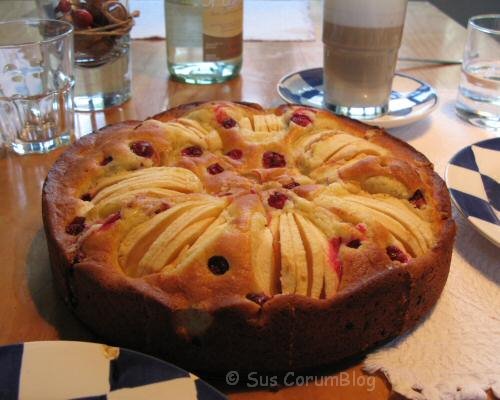
![World Bread Day '07 [16. Oktober 2007]](http://farm2.static.flickr.com/1226/994122329_2c95d53d27_o.jpg)
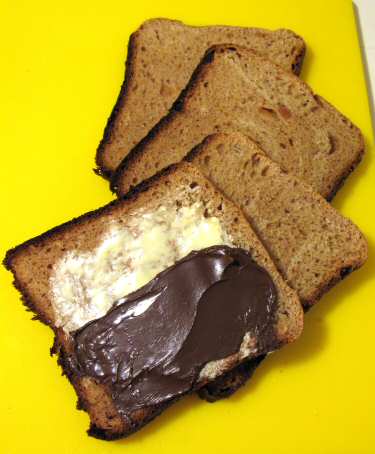
![Blog-Event XXVIII: Die Walnuss [15. Oktober 2007]](http://farm2.static.flickr.com/1152/1408057766_85d91cb8f9_o.jpg)
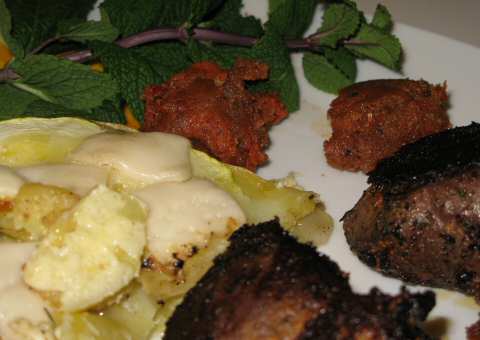
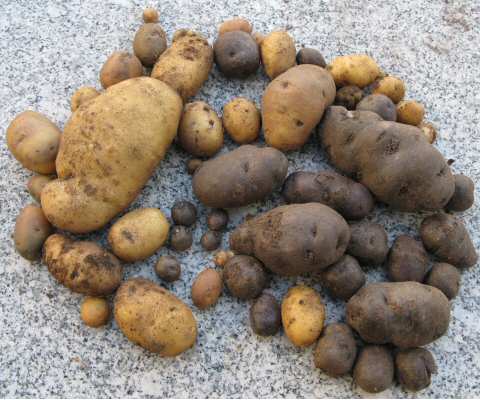 The picture on the right side shows this year’s potato crop. I admit, it isn’t much, but I didn’t have to lift a finger for them! They are all self-seeded or left-over potatoes from last year. So I think the amount is quite acceptable.
The picture on the right side shows this year’s potato crop. I admit, it isn’t much, but I didn’t have to lift a finger for them! They are all self-seeded or left-over potatoes from last year. So I think the amount is quite acceptable.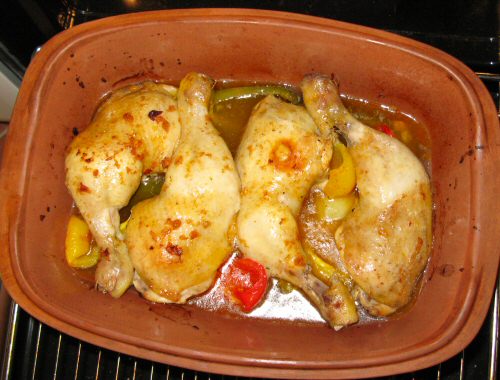
 )
)![World Pickle Day [September 10, 2007] World Pickle Day [September 10, 2007]](http://farm1.static.flickr.com/226/486749590_be3d9e707a_m.jpg)
